Best Apps To Learn German In 2023 (Rigorously Tested)
 Written byJohann Brennan
Written byJohann Brennan- Read time20 mins
- Comments0

If you’re looking for apps to learn German, look no further.
Whether you intend to travel to Germany, study for a CEFR exam, or brush up on your German literacy, you can be sure there’s an app to help you.
In the past, resources for learning German were limited.
These days, however, there are tons of free and paid apps that can help you master German incredibly quickly.
In this guide, we’ll provide an overview of the top German apps available to try. Some of these apps provide full courses for the German language, and other apps focus more on reading and writing German, or improving your German vocabulary.
Read on to discover the best apps for German language mastery whether you’re already familiar with the language or a complete beginner.
Table Of Contents
- Rocket German
- Mondly
- Babbel
- Pimsleur
- GermanPod101
- Duolingo
- Fluenz
- Brainscape
- Test Zur Deutsch Grammatik
- German Complete Grammar
- 14,000 Deutsche Verben
- Der Die Das
- Learn German by Bravolol
- Rosetta Stone
- HelloTalk
- Bilingua
- Busuu
- Speechling
- Chatterbug
- German Conversation Practice with Cudu
- italki
- Verbling
- Memrise
- AccelaStudy App
- MosaLingua
- Anki
- Wie Geht’s
DISCLAIMER: The comments below are personal opinions.
German Course Apps
If you want to learn German from beginning to end like you’re taking a class, then you should select a German course app.
In most cases, these apps are provided by companies that also offer courses in other languages, and they vary in terms of quality and thoroughness.
Let’s examine some of the best German course apps on the market.
Rocket German

This German course from Rocket Languages is one of the most comprehensive full-course German language apps in this section.
Rocket German might be the best app to learn German if you want to be carefully guided through the learning process, but this app is somewhat more expensive than its competitors.
Pros/cons: Rocket German features impressive dialogue sections that help you prepare for speaking German with native speakers. This app also includes gamification features and leaderboards that inspire you to do your best. Unfortunately the Rocket German community/forum could be more active and they could improve the course a lot by adding video.
Pricing: Rocket Languages offers its language courses in tiers. Tier I Rocket German costs $99.95, Tier II costs $249.90, and Tier III costs $259.90. Rocket German is offered as a one-time purchase instead of as a subscription.
Join The Guild by clicking here, select German and I’ll send you a unique offer for Rocket German exclusive to my readers only.
See this Rocket German review.
UPDATE: If you ‘Join The Guild’ and select German as your language, you’ll receive a unique discount offer only available to readers of this site.
Mondly

Mondly is a unique language app that incorporates augmented reality (AR) and virtual reality (VR) components.
While Mondly is one of the most intriguing full-course German apps, some of its features seem unnecessary, and this app focuses mainly on low-level language learning.
Pros/cons: You might find it easier to learn German with an AR teacher in your office or when you’re fully immersed in a VR cafe setting. This type of learning isn’t for everyone, however, and certain aspects of this language app, such as its chatbot, seem more gimmicky than useful.
Pricing: There is a free version of Mondly, and paid subscriptions start at $9.99 per month. You can also purchase an annual Mondly subscription for $47.99.
Babbel German
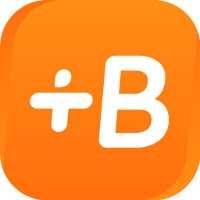
The Babbel app delivers high-quality German course content that is ideal for students who need an edge before starting an in-person German language course or who want to supplement traditional classroom materials.
Pros/cons: The Babbel app gives students access to content that focuses on listening, speaking, writing, and reading German. The software features voice-recognition technology and interactive dialogues to promote the fast acquisition of conversational skills. The Babbel app offers no opportunities to interact with teachers or other language learners to improve conversation skills in real-life scenarios. Also, its fill-in-the-blank exercise structure can be dull.
Pricing: Access to course materials through the Babbel app is subscription based. A student can sign up to learn German through the Babbel app for a fee of $6.95 per month when he or she signs up for a year’s worth of access.
See this Babbel review.
Pimsleur
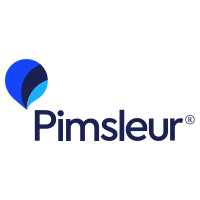
The Pimsleur app is one of the best apps to learn German. It delivers a comprehensive German learning course to students using Pimsleur’s famous auditory format. Dr. Paul Pimsleur developed the Pimsleur language learning method based on the way that children learn their native languages. By doing listening exercises, German language learners unlock the keys to fluent speech in shorter time periods.
Pros/cons: The app works well for students who want to focus on speaking and listening comprehension. The company recently added visual content and game-like quizzes to support different learning styles. Course materials seem outmoded to some users compared to the courses that competitors offer.
Pricing: The advertised price for a subscription to Pimsleur’s German language learning app is $19.95 per month.
See this Pimsleur review.
GermanPod101

GermanPod101 offers students thousands of podcast-style lessons that are based on students’ learning goals.
Pros/cons: Audio and video podcasts feature native German speakers. Watching and listening to these tutors help a lot with pronunciation. Video production quality isn’t consistent throughout the course. Newer lessons give students a better user experience; older lessons need to be redone. The course also doesn’t cover grammatical instruction well.
Pricing: There is a free version of GermanPod101 app, and there is a subscription version that ranges in price from $4 to $23 per month. The pricing is based on a 24-month subscription period.
Duolingo
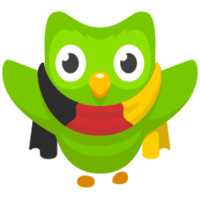
The Duolingo app offers a course for German language students that includes hundreds of short, personalized lessons. Before getting started, the app asks students these questions to customize the learning experience. - Reason for learning German - Weekly time commitment for the course - Experience level with the language According to the company, 34 hours of Duolingo study equates to one semester of an in-person language course.
Pros/cons: Duolingo strives to make language learning fun and accessible to everyone. The app’s German language lessons are designed as games that offer challenges and rewards as one passes certain learning milestones. Contributors of the course realize that students learn differently. The app allows students to access special Duolingo features such as interactive stories, in-person events, and podcasts that help with speaking, reading, and listening comprehension. While Duolingo app users praise the tool, they admit it won’t make a beginner fluent in German on its own. Also, the Duolingo app course doesn’t follow the Common European Framework of Reference (CEFR) for languages and doesn’t issue proficiency certificates.
Pricing: The Duolingo app is free. Duolingo Plus, which is the company’s paid version of the course, costs $9.99 per month. It includes ad-free lessons and allows users to download course materials for offline use.
See this Duolingo vs Babbel comparison.
Fluenz
The Fluenz app is a comprehensive German language learning tool that supports beginners and advanced students. Fluenz app courses blend content that focuses on speaking, reading, writing, and listening comprehension in a digital environment that mimics a traditional classroom-style setting.
Pros/cons: The instructor-led video productions are of high quality. They offer the right amount of repetition and pronunciation help to make the Fluenz app worth considering for beginners. Fluenz courses come in five levels. The first level is the easiest, and the fifth level is the hardest. The content is not customizable. A learner can skip lessons to get to more challenging work, but there isn’t a way for a student to test out of a block of lessons. Experienced German language learners have trouble knowing where to start taking lessons.
Pricing: Course materials that one accesses through the Fluenz app range in price from $187 to $408. A student who wants access to only Level 1 course materials pays a one-time fee of $187. If the student wants access to all five levels, he or she will pay a one-time fee of $408.
See Fluenz review.
German Reading and Writing Apps
German course apps usually provide information on how to read and write this language, but the apps below focus specifically on literacy.
Use the apps in this section to master the art of reading and writing German:
Brainscape
Using proven scientific cognitive research, Brainscape delivers faster learning with its flashcard-based German vocabulary and verb courses that users can access through its app.
Pros/cons: The Brainscape app features a learning algorithm that allows students to access progressively more challenging verb conjugation and vocabulary flashcards based on their individual proficiencies. The Brainscape app doesn’t focus on speaking German in real-world conversations but concentrates on grammatical instruction.
Pricing: There is a free version of Brainscape that gives students basic access to its flashcard content. A premium version of the app is $4.99 per month based on yearly billing, and one can get lifetime access to premium membership content with a one-time payment of $129.99.
Test Zur Deutsch Grammatik A1-A2-B1-B2-C1
This app lets students access advanced German grammar and vocabulary lessons that are presented in a simple, concise format.
Pros/cons: The lessons follow CEFR standards and prepare students for German language proficiency tests. This app is not for beginners and doesn’t emphasize conversational German.
Pricing: The app is free on Apple and Google play stores.
German Complete Grammar
The German Complete Grammar app teaches Level A1 to Level C1 students about German grammatical structures with thousands of multiple choice exercises for each level.
Pros/cons: This app presents comprehensive German grammar lessons for intermediate and advanced students. The app works in tandem with Google Translate. Users found a few errors in some of the multiple choice grammar exercises.
Pricing: Students can access German grammar lessons on the app for free, or they can pay $1.99 for an ad-free version of the lessons.
14,000 Deutsche Verben

The 14,000 Deutsche Verben app is a German grammar tool that conjugates over 14,000 verbs in all tenses.
Pros/cons: The app allows users to customize a favorites list of verbs for targeted conjugation study. It comes with a voice feature that gives the correct pronunciation of the verbs in all tenses. Students can use the app without an internet connection. The ads that display while using the app online are annoying, and there is currently no ad-free, paid version of the app.
Pricing: The 14,000 Deutsche Verben app is free.
Der Die Das

The Der Die Das app is a leading German language learning tool for noun and article instruction.
Pros/cons: The dictionary format of the Der Die Das app helps students to quickly search for articles by typing in specific nouns. The app also features game-like quizzes that reinforce memory of noun genders and associated articles. The app doesn’t provide usage examples in sentences that allow students to learn nouns and articles in context.
Pricing: The Der Die Das app is free. An ad-free version of the app costs $1.99.
German Speaking Apps
Learn German by Bravolol
Bravolol’s Learn German app instructs students about a number of common German words and phrases.
Pros/cons: The app features correct pronunciation by native German speakers and a voice playback mechanism that allows one to compare his or her word pronunciations with those of native speakers. The app works offline. The app’s content is limited to built-in phrases. There’s no way to add new phrases for practice purposes. Bravolol’s Learn German app also doesn’t present its phrases in sentences to show correct spelling, grammar, and punctuation.
Pricing: The basic version of the app is free but supported by ads.
Rosetta Stone

The Rosetta Stone app gives students access to one of the most comprehensive German language learning tools on the market.
Pros/cons: The app brings lessons to students that are based upon common themes such as business, travel, and everyday life. For a fee, students can get one-on-one tutoring with a teacher. The app’s software doesn’t support all learning styles such as kinesthetic learners.
Pricing: The price of the Rosetta Stone app ranges from $6.99 to $11.99 per month depending on the chosen subscription period. One can get lifetime access to Rosetta Stone’s German language learning software through its app for a one-time fee a $199.
See this Rosetta Stone review.
HelloTalk
The HelloTalk app isn’t one of those typical learn German apps. It’s a global language exchange app that is designed to give German language learners a richer experience.
Pros/cons: With this app, German language learners put vocabulary words into action with the help of native German speakers. Students get accurate pronunciation correction in real time from German peers who volunteer for live conversations. The app doesn’t include structured lessons or other language-learning tools. It isn’t designed to be a stand-alone language learning tool.
Pricing: The HelloTalk app is free.
Bilingua
Like HelloTalk, Bilingua connects German language learners to native speakers.
Pros/cons: Besides being a language exchange app, the Bilingua app includes language learning tools such as mini quizzes and games. The app also matches students to native speakers who have similar interests. Bilingua app users report technical glitches with the app.
Pricing: The Bilingua app is free.
Busuu

The Busuu app combines powerful German language-learning content with some of the features of language exchange apps. The app works well on its own to improve German language students’ proficiency. However, the Busuu app gives maximum benefit when it’s used with formal, in-person courses.
Pros/cons: The Busuu app gets German language learners closer to fluency with exercises that support real-life conversation and not just vocabulary recall. The Busuu app is a serious German language learning app that doesn’t include many entertaining games to keep students’ interests high.
Pricing: The basic version of Busuu that a German language learner can access through the Busuu app is free. The premium subscription comes with more content, features, and a fee.
See this Busuu review.
German Tutoring Apps
The best way to learn a language like German is to simply start conversing with a native speaker.
Whether you’re looking for a formal tutoring experience or just an instant-message “pen pal,” there are plenty of apps out there that hook you up with native German speakers for multilingual chats.
Check out the following apps if you’d rather hone your German language skills by striking up a genuine conversation:
Speechling

The Speechling app begins German language learning with sentence repetition but encourages more freestyle conversation as lessons progress.
Pros/cons: The app allows students to use German vocabulary and grammatical instruction to creatively string together sentences to describe actions in flashcard-style pictures. Students have the option to record verbal answers and get feedback from native German speakers. The Speechling app is not for beginners, and it’s best used with other German language learning tools such as a translation dictionary.
Pricing: The basic Speechling app is free. It comes with at least 15 hours of feedback for recorded speech.
Read our Speechling review.
Chatterbug
The Chatterbug app instructs German language learners through grammar and vocabulary exercises. Students can test knowledge with live lessons with native speakers through the Chatterbug website.
Pros/cons: Chatterbug has extensive vocabulary and grammatical exercises for self study. Live sessions, which are one-on-one video chats with native speakers, aren’t currently available through the Chatterbug app. Students can access these live sessions through the Chatterbug website.
Pricing: Subscription prices for German language learning content that students access through the Chatterbug app and the website start at $18 per month.
German Conversation Practice with Cudu
The Cudu app uses dialogue lessons to get students speaking German like natives.
Pros/cons: The app’s dialogue lessons feature topics that are common to daily life and work scenarios. The app uses voice recognition software instead of live humans to correct pronunciation. Errors happen.
Pricing: The app is free.
italki
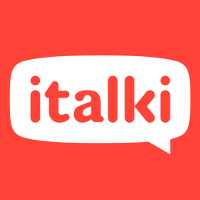
The italki app brings German language immersion to students’ doorsteps. The app allows students to take lessons from German teachers and converse with German language tutors to improve conversation skills.
Pros/cons: The italki German app offers students a convenient and effective path to fluency using video lessons with live German teachers and tutors. This app is one of the pricier options for German language learners.
Pricing: Students pay per lesson. Rates generally start at $10 per lesson but vary by instructor.
See this italki review.
Verbling
Verbling is similar to italki and offers one-on-one tutoring with qualified instructors.
Pros/cons: Both italki and Verbling instructors enjoy a lot of autonomy when it comes to lesson plans. The Verbling app supplies students with supplemental course materials for offline study that prepares German language learners to make the most of their time with tutors. There are fewer instructors at Verbling than at italki.
Pricing: The by-hour rates for using the Verbling app to connect with live tutors for lessons vary by instructor.
German Vocabulary Apps
Whether you already have a rudimentary grasp of German or you only need to know a few words in this language to get by, German vocabulary apps can help you increase the number of German words you know without any conversations or coursework.
Use the following apps to brush up on basic German phrases and impress your friends with your basic multilingual knowledge:
Memrise

Memrise ranks as one of the best apps to learn German vocabulary quickly and effectively. It goes beyond flashcards and delivers challenging quizzes that make German language learning interesting.
Pros/cons: The Memrise app gives students access to pre-built vocabulary lessons and allows them to publish their own lessons. The Memrise app is a study aid only and won’t likely make students fluent with solo use. Also, user-generated content varies in quality.
Pricing: The basic version of the Memrise app is free. However, there is a paid premium version that offers more content and features. The prices are $8.99 per month, $7.50 per month for an annual subscription contract, and a one-time fee of $139.99 for lifetime access.
See this Memrise vs Duolingo comparison.
AccelaStudy App
Few learn German apps claim to prepare students for proficiency exams. The AccelaStudy app is one of them. The app includes study sets that focus on specific groupings of vocabulary words for language mastery.
Pros/cons: The app allows students to make their own study sets for a personalized learning experience. The app comes with progress tracking, and results are kept in cloud storage. Some of the best apps for learning German are based on cognitive research. The AccelaStudy app employs the spaced repetition learning technique in its course materials. This app is only offered on Apple devices.
Pricing: The basic version of the AccelaStudy app is free. A paid premium version of the app contains more content and features.
MosaLingua
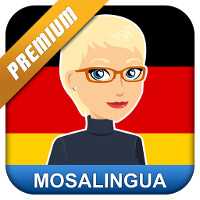
MosaLingua is a German language learning app that uses the spaced repetition method in flashcard-based lessons. The lessons feature single vocabulary terms or more advanced phrases. Vocabulary terms and phrases are organized under categories such as tourism, hobbies, transportation, and shopping.
Pros/cons: Besides allowing students to create their own flashcards, the MosaLingua app comes with an extensive collection of German terms and phrases. Lessons are delivered in audio, video, and textual formats. MosaLingua app is ad free. The MosaLingua app locks students into the spaced repetition learning method. If a student wanted to study the vocabulary terms in a certain category more extensively in preparation for a trip, he or she wouldn’t be able to override the app’s programmed study schedule.
Pricing: The price of accessing MosaLingua German language learning software through its app is $4.99. This is a one-time payment that delivers lifetime access.
See this MosaLingua review.
Anki
The AnkiApp is a flashcard app that has earned a great reputation with German language learners. The app allows students access to millions of German vocabulary terms and popular phrases. It features a high-efficiency learning algorithm that detects proficiency by how fast students respond to the flashcards and shuffles the flashcards accordingly.
Pros/cons: The AnkiApp allows students to generate their own flashcards. They can add image and audio files to make the flashcards more effective. Some users claim that navigating the AnkiApp isn’t as easy and intuitive as competitor apps. Also, the AnkiApp has so many features that a German language learner can use it without really getting the full benefit of the tool.
Pricing: The AnkiApp app is free for Android users. Apple users must pay a one-time $24.99 fee.
Wie Geht’s
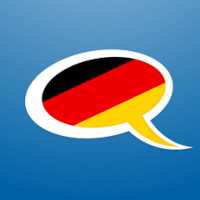
The Wie Geht’s app is a German language learning app that presents lessons in an interactive format. Vocabulary words and phrases are organized by categories such as greetings, social etiquette, and family.
Pros/cons: The Wie Geht’s app instructs students about common vocabulary terms in real-life scenarios that bring context to lessons. Students can access app lessons offline. The app doesn’t allow students to connect with native speakers to improve pronunciation.
Pricing: The Wie Geht’s app is free.
How to choose the best apps for learning German
Determining the best app to learn German really depends on your motivation.
If you just want to learn enough German to order a coffee, then a basic vocabulary guide might be all you need.
If you plan on immersing yourself in German culture, however, you’ll need to select apps for German that fully prepare you for speaking, reading, and writing this foreign language on a daily basis. To get started, I suggest that you pick a free app that provides a basic overview of the German language. From there, you can consider investing in a full paid course that will help you develop a firm grasp of German.
There’s no single app that will make you a German expert overnight, but each of the apps I’ve shared in this guide can bring you closer to your goal of learning German.
Know of an app for learning German that I didn’t mention?
Share it below in the comment section.
 Grab the link to this article
Grab the link to this article